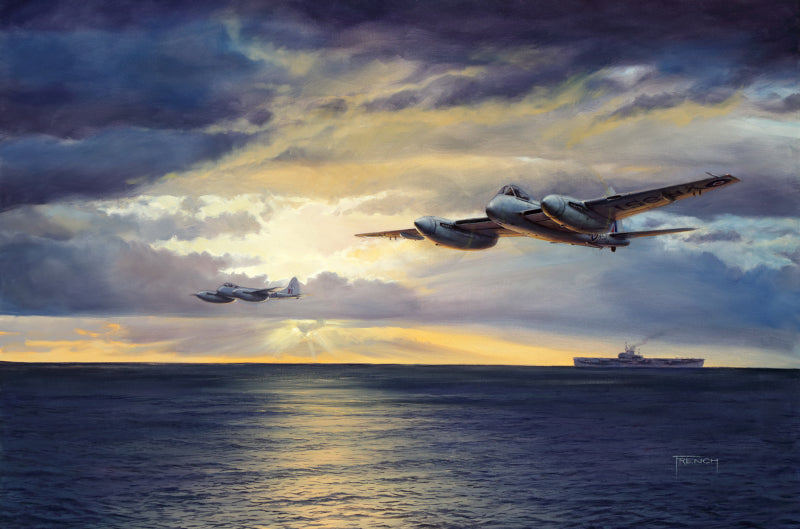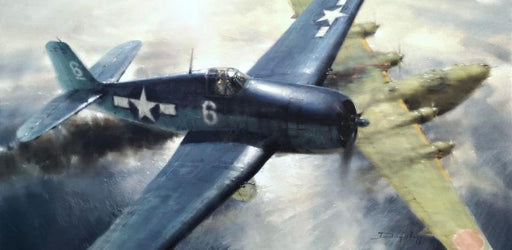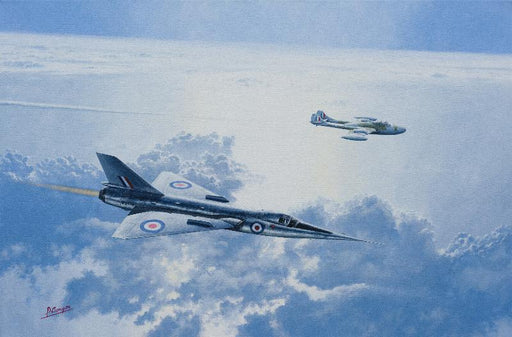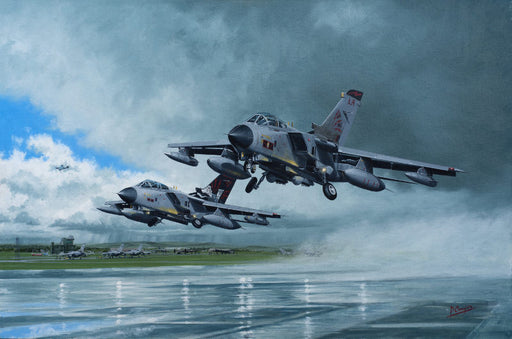Aviation Art Print showing De Havilland Sea Hornet from HMS Implacable by Artist Chris French GAvA
By 1944, the Fleet Air Arm had taken into service many of the excellent US Navy types, such as the Hellcat, Avenger and Corsair, but what were really needed were top-class home-built aircraft that could fill the void once war was over and those aircraft had been returned under the Lend-Lease agreement. The immediate post-war era saw the FAA squadrons re-equip with four excellent aircraft. These were the Fairey Firefly Mk.5, Hawker Sea Fury, Supermarine Seafire Mk.46/47 and De Havilland Sea Hornet.
The Sea Hornet, was a development of the supreme Hornet fighter, then being designed for service with the RAF. Designed in conjunction with the Vampire jet as a back-up should the jet project fail, Geoffrey De Havilland’s insistence that he would only let his company continue with the design if there were sufficient orders led to a sizeable order for both the land and navalised versions. With folding wings, carrier landing equipment and a modified, strengthened undercarriage, the Sea Hornet still managed a top speed of 469mph with the first prototype flying on 19 April 1945.
Deck trials began in August 1945 and the first production F.Mk.20 were built from August 1946 with a further 87 being built up to 1951. Other notable versions were the NF.Mk.21 night fighter and PR. Mk.22 reconnaissance aircraft, the last of the former being replaced by Sea Venoms in 1954.
The aircraft shown in Chris French’s aviation art painting print come from 806 Squadron, based aboard HMS Implacable. 806 and 801 rotated between shore and carrier assignments, while 806 also became the RN’s aerobatics squadron, the Sea Hornet proving to be a superb aircraft for this duty. One of the best aircraft Navy pilots ever had to fly, all Hornets had been scrapped by 1958 with not a single example preserved for posterity. A great pity.






